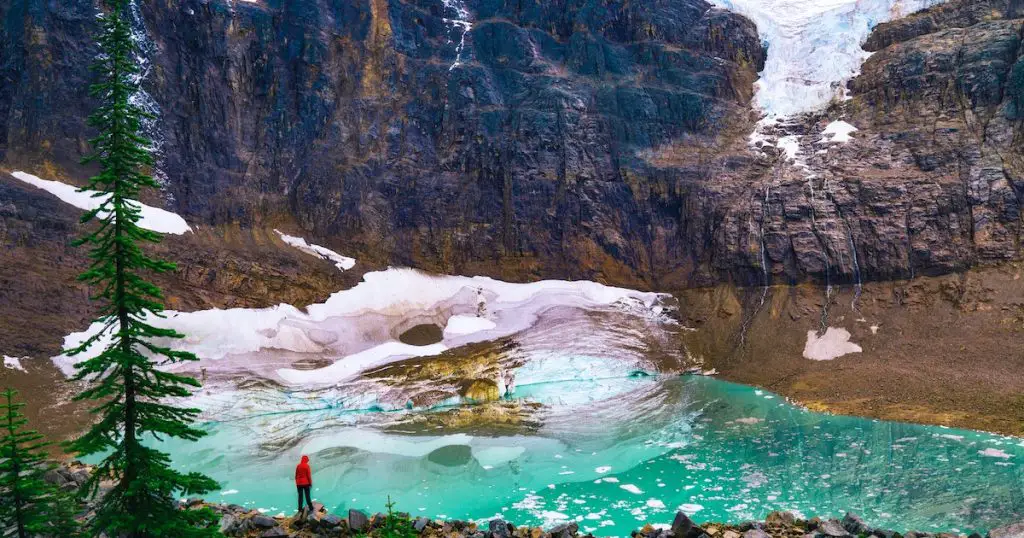The beauty of Arizona’s geography is well known, but many people don’t realize how its unique topography impacts the temperature, especially in the transition month of April. Arizona’s climate offers an array of experiences, from snow-capped mountains to sun-drenched deserts.

As the state shakes off the vestiges of winter, understanding the temperature in Arizona in April becomes essential, whether you’re a resident preparing for the shift in seasons or a tourist planning a visit.
Why April?
April signifies a change in the air for Arizona. The chill of winter subsides and gives way to a pleasing warmth that isn’t as overwhelming as the peak summer months. With temperatures that are comfortable and an abundance of sunlight, it’s no surprise that this is a favored time for both locals and visitors.
Outdoor enthusiasts revel in the pleasant weather as it paves the way for a plethora of activities. From hiking in Sedona’s stunning red rock landscapes to enjoying Cactus League spring training games, April’s weather forms the perfect backdrop.
The Tempe Festival of the Arts, held in late March and early April, attracts artists and spectators from all over the country, showcasing the vibrancy of the local culture.
Understanding Arizona’s Geographical Diversity
Arizona’s geographical features are diverse, ranging from the majestic Grand Canyon in the north to the expansive Sonoran Desert covering much of the state. This diversity isn’t just scenic; it plays a significant role in the variation of temperatures throughout Arizona, especially in April.
Mountains, for instance, tend to have lower temperatures due to their high altitudes. The northern regions of the state, such as Flagstaff, are considerably cooler compared to the desert landscapes of the south.
Such geographical distinctions lead to a variety of temperatures, creating distinct regional climates within the state. It’s this diversity that makes Arizona a fascinating subject when it comes to understanding its April temperatures.
Arizona’s Average Temperatures in April: An Overview
In April, Arizona begins to exhibit the warmer temperatures that it is typically associated with. The average highs throughout the state range between 70 to 85 degrees Fahrenheit, while the lows can dip between 40 to 60 degrees.
However, these averages can differ significantly depending on the specific region of Arizona you’re in, largely due to the diverse geographical features present.
Comparatively, these temperatures are noticeably warmer than the preceding winter months, yet still cooler than the intense heat that arrives in the peak of summer. Understanding this progression of temperature throughout the year can help in planning activities and schedules for residents and tourists alike.
Region-Specific Breakdown: Northern Arizona
When it comes to April temperatures, Northern Arizona presents a more moderate profile compared to the rest of the state. Flagstaff, for instance, can expect highs around the mid-50s and lows around the freezing point, according to data from the National Weather Service.
The altitude plays a significant role in this cooler climate. Many cities in Northern Arizona are at a higher elevation, which leads to a drop in temperature. For example, Flagstaff’s elevation is over 6,900 feet, contributing to its cooler temperatures. So, while the rest of Arizona starts warming up in April, the north still clings to the tail-end of cooler weather.
Region-Specific Breakdown: Central Arizona
Central Arizona, on the other hand, is characterized by its warmer temperatures, even in April. The average highs in Phoenix, for example, sit in the mid to high 80s, while the lows are generally in the mid-60s.
These temperatures, according to US Climate Data, create a comfortable atmosphere that allows residents and visitors to enjoy outdoor activities without the extreme heat Arizona is known for in the summer months.

This warmer climate is due to the influence of the Sonoran Desert, which dominates Central Arizona. The desert landscape, with its lower elevation and lack of cooling bodies of water, tends to maintain and radiate heat, leading to the higher temperatures experienced here.
Region-Specific Breakdown: Southern Arizona
Southern Arizona, including cities like Tucson and Yuma, tends to have slightly higher temperatures than the rest of the state in April. For instance, Tucson’s average high for April is in the mid-80s, and lows are usually in the low-50s, according to US Climate Data.
The warmer temperatures in this region can be attributed to its proximity to the Mexican border. Southern Arizona is closer to the equator than Northern Arizona, leading to an overall warmer climate. As with other parts of the state, however, it’s essential to consider that these are averages, and actual temperatures can fluctuate based on a variety of factors.
Daytime vs. Nighttime Temperatures
One of the distinctive features of Arizona’s desert climate is the significant difference between daytime and nighttime temperatures, a phenomenon known as “diurnal temperature variation.” During the day, the sun intensely heats the ground, leading to warm or hot daytime temperatures. However, once the sun sets, the heat quickly dissipates, resulting in much cooler nights.
According to NASA’s Earth Observatory, this is because dry desert air and the lack of cloud cover allow the heat to escape rapidly after sunset. As a result, even in the warmer month of April, nights can still be quite cool, especially in the northern and higher-altitude areas of the state.
When it comes to historical temperature trends, data from the past few decades reveals that April temperatures in Arizona have been gradually increasing. According to research from Climate Central, this trend aligns with global warming patterns and is particularly noticeable during the transitional spring months.
How Global Warming Impacts April Temperatures
Global warming and climate change are pressing issues that have noticeable effects on Arizona’s weather patterns. Scientists at the Union of Concerned Scientists have stated that as global average temperatures rise, warmer spring temperatures are a noticeable effect. For Arizona, this means April’s temperatures are gradually increasing over the years.

The consequences of these changes are far-reaching, potentially impacting everything from water availability to the prevalence of wildfires in the region. Thus, understanding global warming’s impact on Arizona’s temperatures isn’t just a matter of weather—it’s crucial to the state’s future.
Preparing for Arizona’s April Weather
When planning a visit or going about day-to-day life in Arizona during April, it’s important to dress appropriately for the weather. Clothing choices should balance the need for sun protection and comfort in warmer temperatures. This might include:
- Lightweight, breathable clothing
- A hat for sun protection
- Sunglasses to shield your eyes
In addition to appropriate attire, hydration is key. The dry climate can dehydrate individuals faster than they realize. Always carrying a reusable water bottle can keep hydration levels optimal and promote sustainability.
Outdoor Activities and Arizona’s April Climate
The warm, sunny climate of Arizona in April lends itself perfectly to a wide range of outdoor activities. This is an excellent time to visit the Grand Canyon or embark on a hiking expedition in Sedona. However, while indulging in these activities, it’s essential to be mindful of safety measures, especially considering the sun and heat.
One should always wear sunscreen, carry enough water, and try to avoid outdoor activities during the peak afternoon heat. Precautionary measures not only ensure an enjoyable time but also prevent heat-related illnesses.
Implications for Agriculture
Arizona’s April weather also has significant implications for agriculture. The state’s farmers have to adapt their planting schedules and crop choices to the warming April temperatures. As the University of Arizona Cooperative Extension explains, early spring crops such as lettuce and broccoli may have to be harvested earlier or switched out for heat-tolerant plants.

Moreover, the warmer weather can also affect the amount of water needed for irrigation, a critical factor considering Arizona’s water scarcity issues. Farmers and agriculturalists, therefore, must continually adapt to these climatic changes for sustainable agriculture in the state.
Wildlife and the Changing Seasons
The arrival of April’s warmer temperatures signals a shift in the behaviors of Arizona’s diverse wildlife. Many species come out of their winter hibernation, and migratory birds return, making it a great time for bird watching. However, as the Arizona Game and Fish Department notes, these patterns could also be impacted by the rising temperatures due to climate change.
Species that are sensitive to heat may face challenges in finding food and water, and the change in their behavior can have cascading effects on the state’s ecosystems. Thus, observing these patterns can provide crucial insights into how global warming is affecting Arizona’s wildlife.
FAQ:
In this section, we will be delving into some of the most common inquiries and curiosities that surround our topic.
What is the average temperature in Arizona in April?
The average high temperature in Arizona in April generally ranges between 70 to 85 degrees Fahrenheit, while the average lows are between 40 to 60 degrees. However, these averages can vary significantly depending on the region and the year.
Is April a good time to visit Arizona?
April is often considered a great time to visit Arizona due to its moderate temperatures. The weather is typically warm but not as intense as the summer months, making it suitable for outdoor activities.
How has climate change affected Arizona’s April temperatures?
Climate change has led to a gradual increase in April temperatures in Arizona over the past few decades, aligning with global warming patterns. This has implications for everything from agriculture to wildlife behaviors in the state.
Conclusion
April in Arizona brings an intriguing blend of pleasant warmth and occasional coolness, a transition that resonates with the vibrant landscapes of the state. This unique balance of temperatures, coupled with geographical diversity, contributes to the state’s allure.
However, the impacts of global warming on this balance underscore the urgency of environmental stewardship to maintain the state’s climate health. The temperature in Arizona in April, therefore, isn’t just a weather statistic – it’s a marker of environmental changes, a guide for lifestyle decisions, and a fascinating characteristic of the Grand Canyon State.



Leave a Comment
You must be logged in to post a comment.